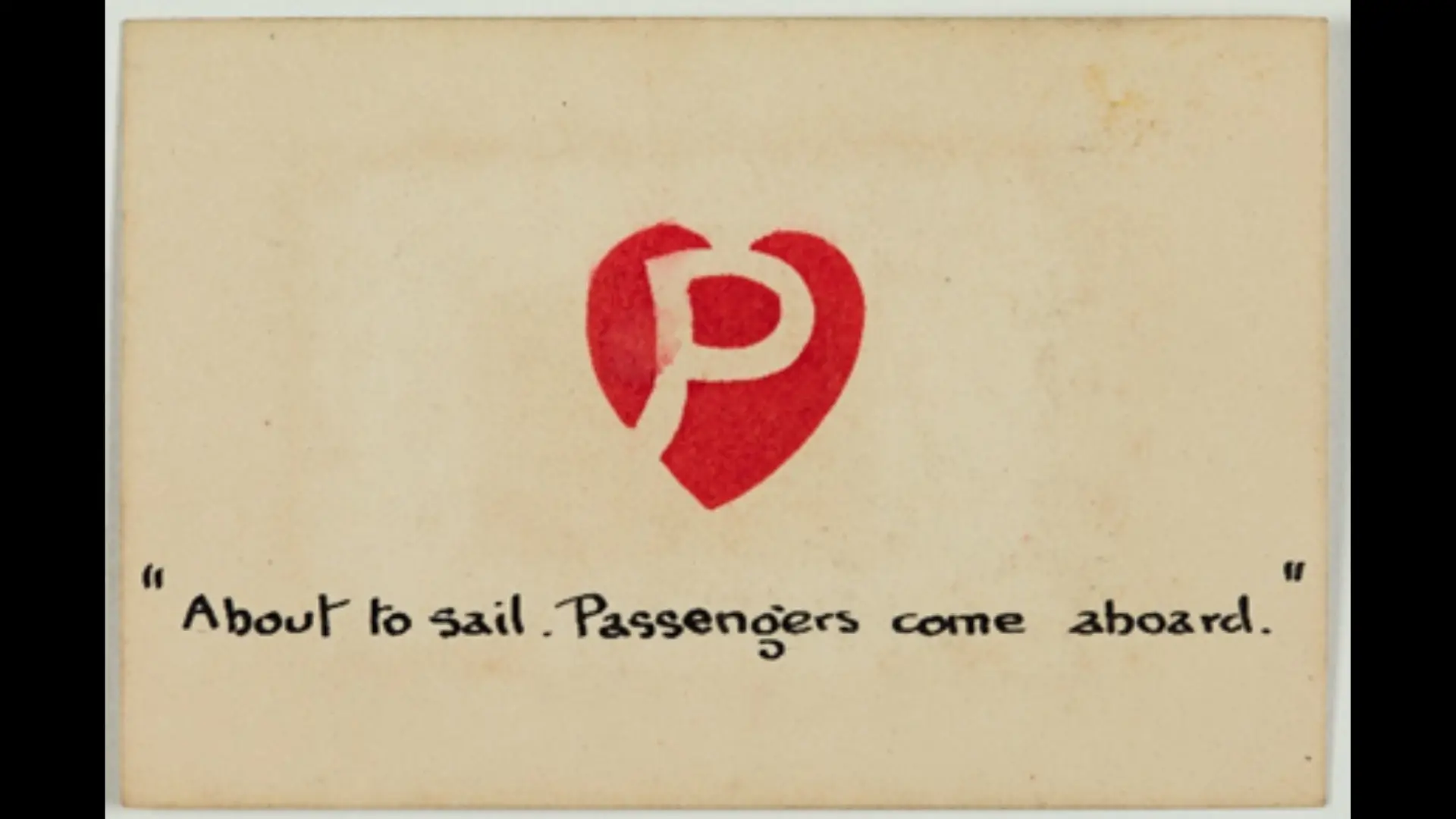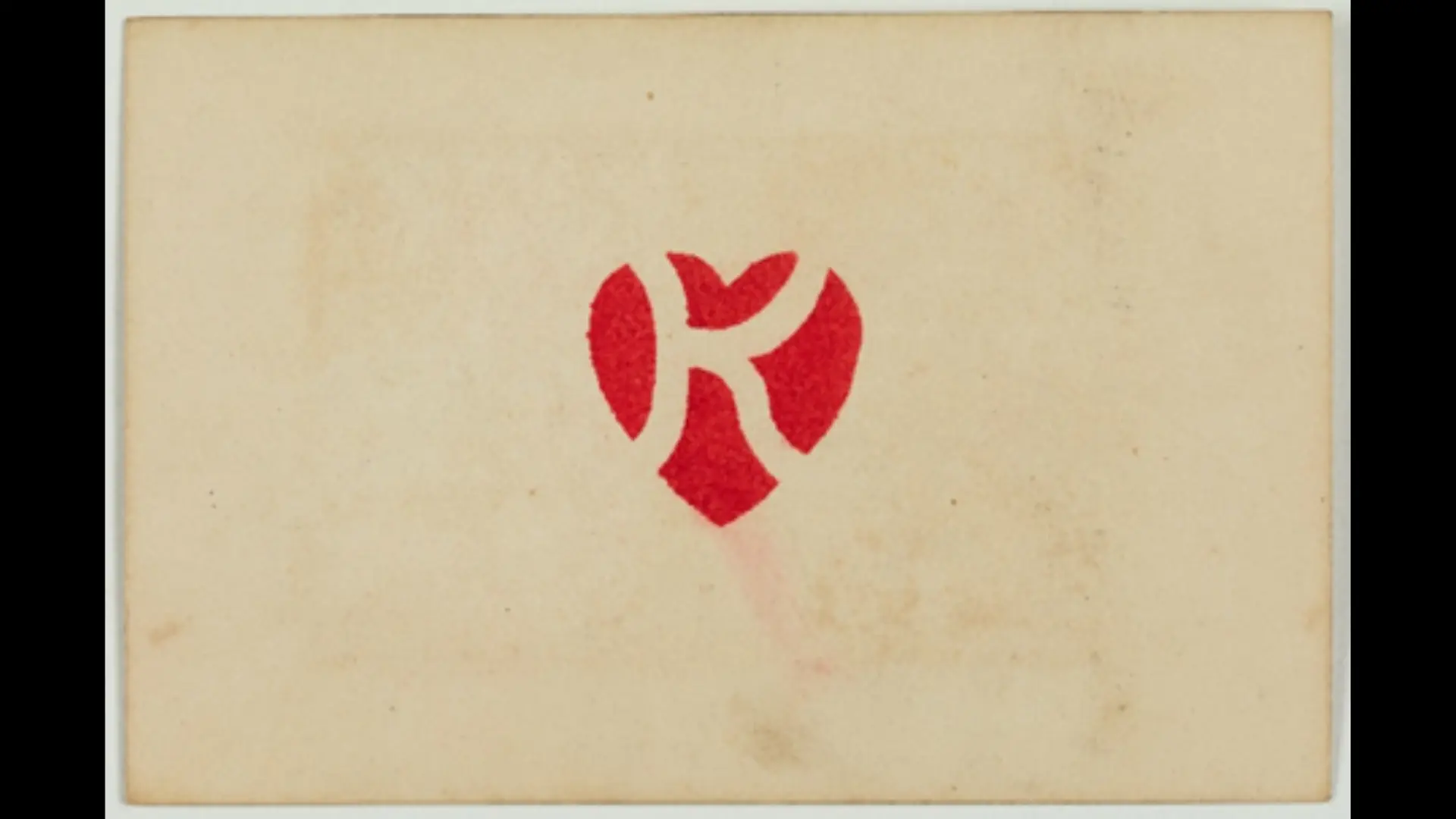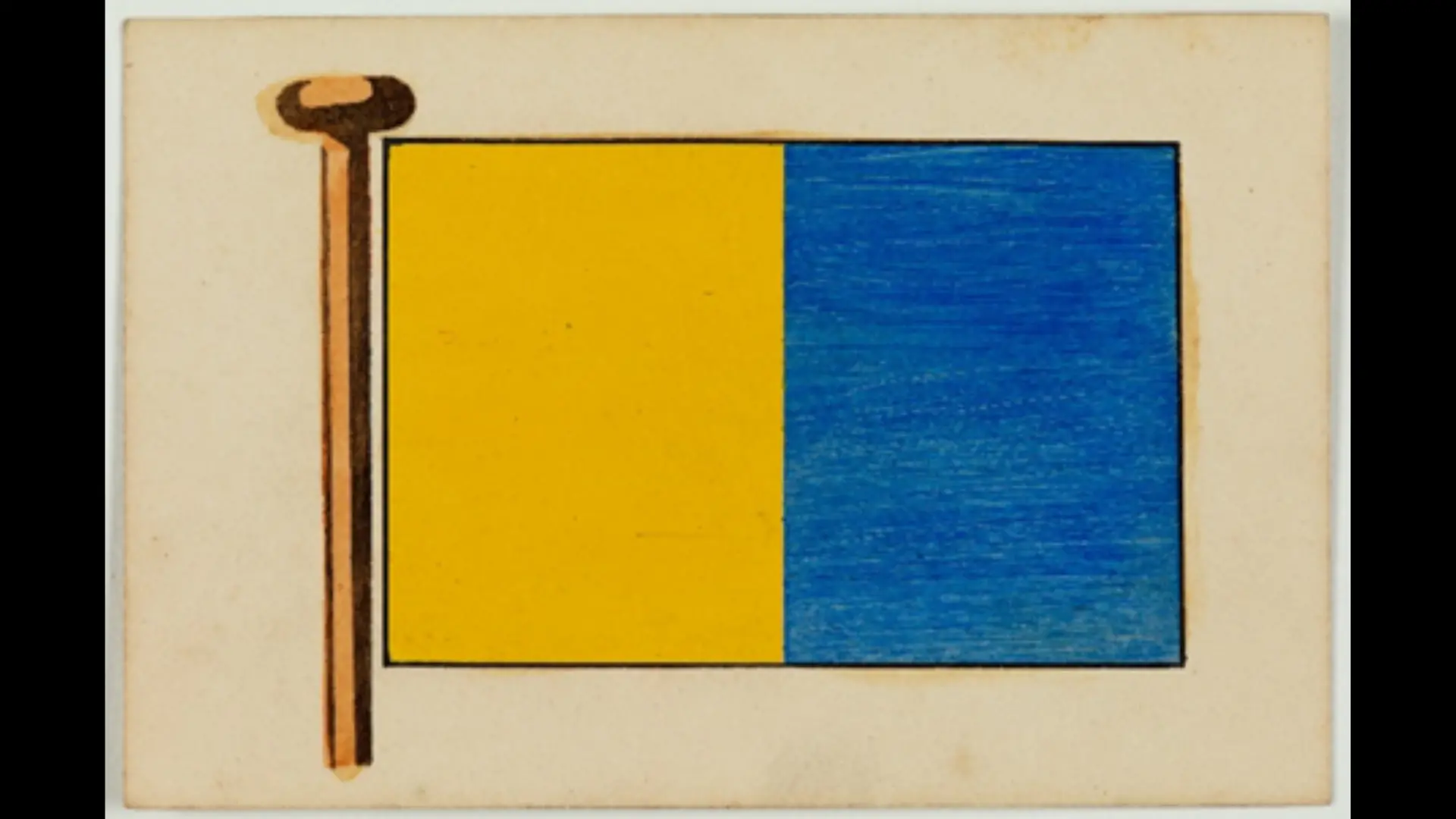The little cardboard box above belonging to Wilfred Champion contains cards freighted with information once vital for mariners the world over. On one side are coloured drawings of flags and pennants from the International Code of Signals, on the other side are their corresponding meanings. The aide-memoire was handmade for Champion in 1916, during the First World War.
By Frances Walsh | 24 Apr 2023
The first international code of signals dates to 1857. Before then, a few coded flags existed. If a ship were in distress, for instance, it flew its ensign upside down, although it was sometimes difficult or impossible to reckon whether a country’s flag was topsy-turvy — the Spanish and Japanese flags being cases in point. Less ambiguous was the meaning of the Jolly Roger, the skull-and-crossbones hoisted by pirates to terrify and soften up their quarry. And while in the eighteenth century the French and the Dutch navies had designed more sophisticated systems of signalling than the British navy, they were not always understood across territorial waters.






